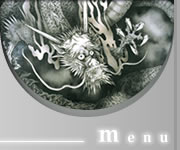From ancient times there have been guides to seated meditation, known as
zazengi 坐禪儀, that explain the necessary prerequisites for Zen meditation. The earliest existing
zazengi, by the Chinese Zen monk Changlu Zongze 長蘆宗賾 (n.d.), advises, “Let go of all relations, put all concerns to rest. Know that body and mind are one, and that there is no separation between stillness and movement. Regulate food and drink, taking neither too much nor too little; adjust sleep, neither depriving nor indulging oneself.”
“Let go of all relations” means putting aside all worldly considerations and quieting the circumstances of your life; “put all affairs to rest” means letting go of all manner of concerns and emptying your mind. The former can be seen as referring to external issues, the latter to internal issues. This brings to mind Bodhidharma’s famous advice to his disciple Huike: “Outside, cut off relations with all things; inside, have no concerns. Keep your mind like a wall, and you will certainly attain the Way.”
“Know that body and mind are one” means to perceive the inseparable unity of the physical body and the formless mind. “No separation between stillness and movement” means to see stillness and activity as equally expressive of the mediative mind, and to remain equally centered during both.
Next Zongze advises, “Regulate food and drink, taking neither too much nor too little; adjust sleep, neither depriving nor indulging oneself.” Zhiyi
智顗 (J., Chigi; 538-597), founder of the Chinese Tiantai school, wrote in the fourth chapter of the
Mohe zhiguan 摩訶止觀, his treatise on meditation, of the importance of regulating food, sleep, body, breath, and mind. “Unless these five factors are well regulated, you cannot enter dhyana,” he says. Of these five factors, he continues, the first two, food and sleep, are external to meditation, and are to be regulated during everyday life, while the last three—body, breath, and mind—are internal to meditation, and are to be cultivated in meditative practice.


